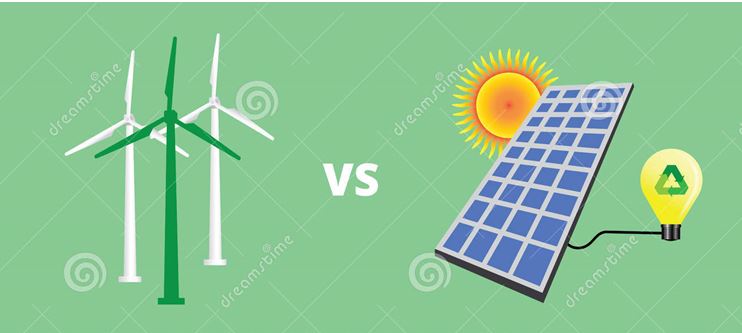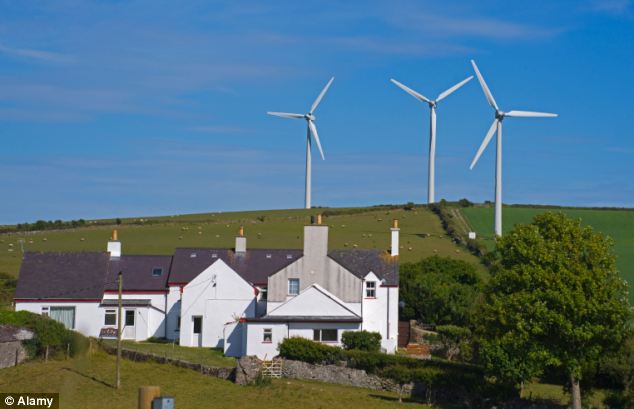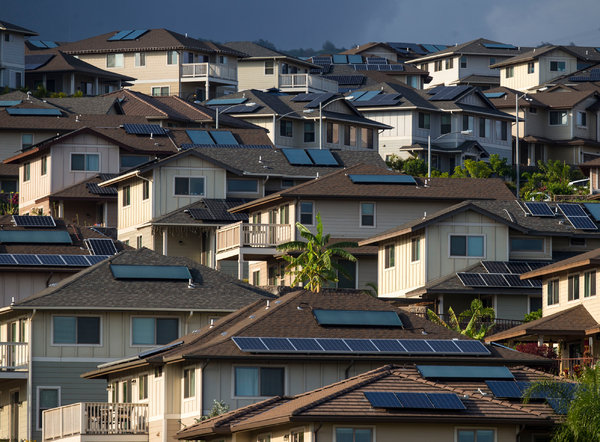 Around the world, renewable energy is on route to displaced fossil fuels, quickly establishing itself as a clean, mainstream energy sources. According to the 2015 Renewables Global Status report , over half of global investments committed to renewables last year were spent on harnessing wind and solar energy, which is only expected to increase in the coming years. As the top two most available sources for renewable energy, government subsidies and a high return on investment has made wind turbines and solar panels viable options for consumers looking to ease off of the electricity grid or start contributing to it. So which renewable energy is best for you?
Around the world, renewable energy is on route to displaced fossil fuels, quickly establishing itself as a clean, mainstream energy sources. According to the 2015 Renewables Global Status report , over half of global investments committed to renewables last year were spent on harnessing wind and solar energy, which is only expected to increase in the coming years. As the top two most available sources for renewable energy, government subsidies and a high return on investment has made wind turbines and solar panels viable options for consumers looking to ease off of the electricity grid or start contributing to it. So which renewable energy is best for you?
Let’s start by breaking down both wind turbines and solar panels, and then discussing some pros and cons of each.
Breakdown: wind turbines vs solar panels
Wind power involves harnessing the energy of wind and converting it into electricity by using wind turbines. A wind turbine is composed on three propeller-like blades affixed to either a vertical or horizontal axis atop a tall tower, usually 20m high. The turbine captures the kinetic energy of the spinning blades as magnets moving past a stationary coil known as a stator produce AC electricity, with a generator converting it to direct current (DC) electricity. Some turbines drive an AC/AC converter, which converts the AC electricity to DC with a rectifier, and then back to AC with an inverter. The resulting electric energy is then stored in batteries, or is diverted into a grid interactive inverter for feeding power into the electricity grid.
Solar power is produced by collecting sunlight and converting it into electricity, either directly using photovoltaics (PV) or indirectly using concentrated solar power (CSP). The solar panels, which are most commonly used on for homes, are actually comprised of many smaller photovoltaic cells. The cells allow photons, or particles of light, to knock electrons free to atoms. Metal conductive plates on the sides of the cell collect the electrons and transfer them to wires, flowing like any other source of electricity.
Both wind turbines and solar panels both produce reliable, cost-effective, clean and sustainable energy, but require a substantial investment, so one should weight the appropriate pros and cons associated with each.
Wind turbines: advantages and disadvantages

Wind power, along with renewable energy sources like hydro power, function by relying on natural environments subjective to geographic location. For example, you wouldn’t build a hydroelectric power plant in a desert location with no flowing water; nor would you build a wind turbine in a location that is not particularly windy.
Wind turbines function most efficiently in areas where average wind speed is above 5m/s or 11pmh, usually near the coast or in open, exposed areas. Wind turbines are not well suited for suburban areas, as turbulent air (where the wind is constantly changing direction like near a busy road or in a built-up area) leaves the turbine constantly chasing the wind rather than extracting power from it. At the same time, one advantage wind turbines hold over solar panels is that they can produce electricity day or night, so long as there is wind.
Advanced technology, improved siting techniques, and learning across all sectors as the industry scales up have all influenced the declining cost of wind energy over time. As of recent, home or farm-scale wind turbines that produce less than 100 kilowatts cost approximately $3,000- $8,000 per kilowatt capacity. A 10 kilowatt turbine (the size needed to power a large home) might have an installation cost of $50,000- $80,000. However, the cost of wind-generated energy has fallen to a mere 2.5-5¢ per kilowatt of energy. Turbines also take up less space on your property to produce sufficient electricity than solar panels do.
Furthermore, wind turbines are able to produce more electricity for the same price as solar panels (for instance, if you spend $1,000 on a wind generator, you can produce 1kW-2kW; with solar panels, you may only produce .5kW – .75kW.
Solar panels: advantages and disadvantages

While it may seem that wind turbines offer many advantages over solar, solar panels are better suited for producing eco-friendly energy in suburban areas, where wind turbines cannot. As solar panels have no moving parts, they require less monitoring than turbines, and do not require any expensive maintenance, although annual cleaning is strongly recommended.
Solar panels, although only able to produce electricity when the sun is shining, provide more predictable energy output based on NASA data.
While installation costs for solar PV solar panels vary based on labor and electronics needed to ties the solar array to your existing electrical system, the Solar Panel Authority estimates the installed cost of solar panels to between $7-$9 per watt, meaning a 10 kilowatt system would cost around $50,000-$70,000. According to the site, ‘many utility companies offer incentives, and some subsidize as much as 50% of system costs. Even at half the cost, though, a system that generates an average $75 of electricity per month could take a long time to pay for itself.’
So which renewable is best?
Compared to solar, turbines are extremely location sensitive, whereas most people can implement a small solar array in most locations and achieve success. Find the right location, and a turbine will give you the most bang for your buck economically and environmentally. In suburban and non-windy residencies, solar panels are still a viable option for renewable energy generation in the long run.
Sources: Solar Electricity Handbook , Energy Matters , Windustry , LiveScience
Advertisement
Learn more about Electronic Products Digital





